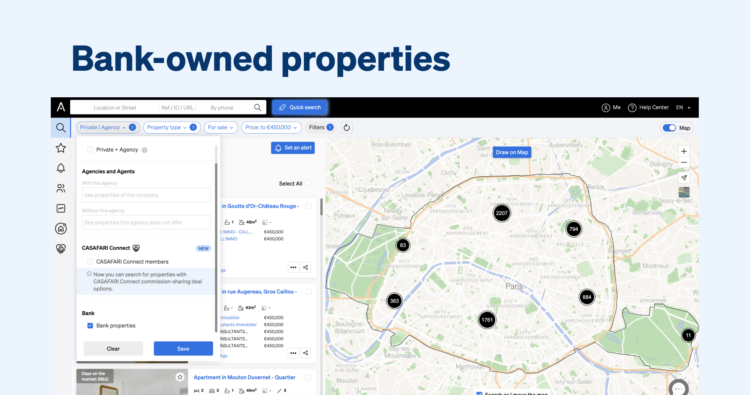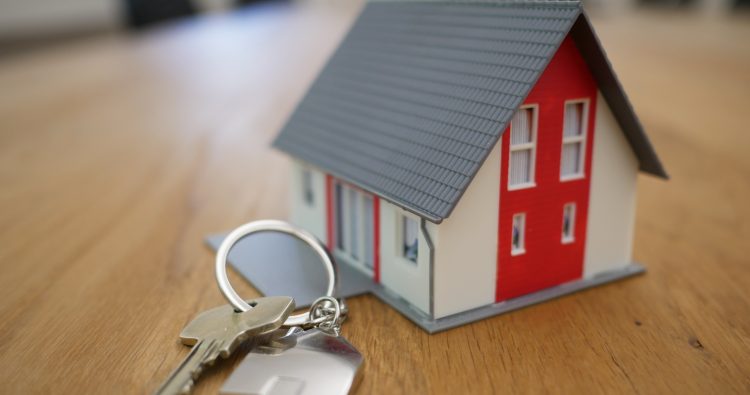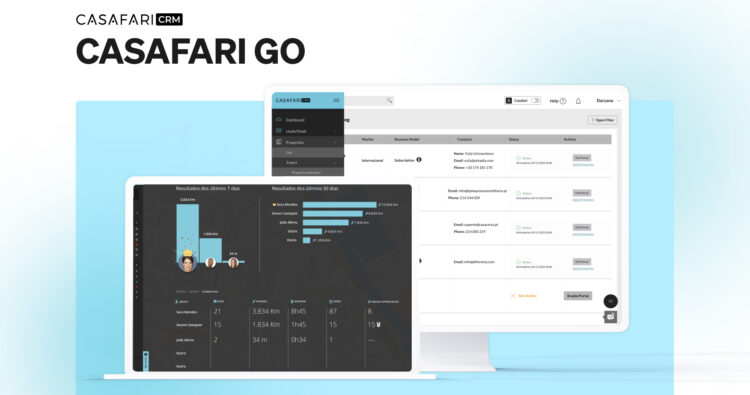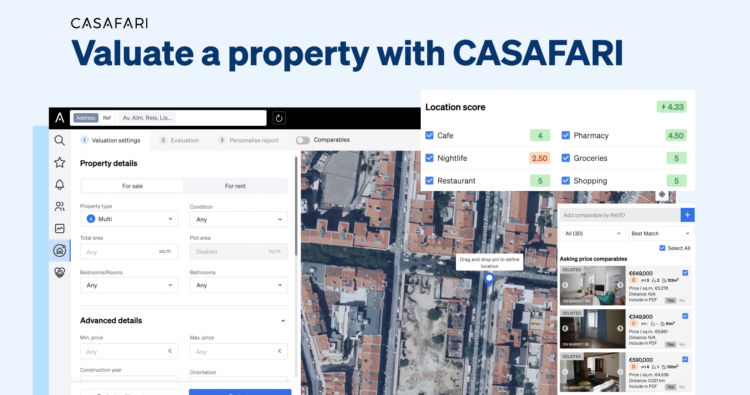Have you ever read a description of a property that made you yawn? Or those that are so plain that could almost fit to any place on Earth?
In this article, you will see how to build a better property listing description, the DOs to attract potential home buyers quickly and the DON’Ts, so you can avoid making the same mistakes as you see on real estate portals.
Must haves for your property listing description
Let’s start with what your listing description can’t miss, shall we? Remember to gather the following information before registering your property on a real estate portal.
Basic information
This is the kind of information that any potential buyer or tenant looks for before anything else. It includes:
- The amount of rooms
- The number of bathrooms
- How many square meters the property has
- Which kitchen appliances are included in the deal
- Whether the property is furnished or not
- The year of construction
- Your contact information
- The asking price.
Many portals offer a specific place to add all these details, but, in case the one you’re using doesn’t, then don’t forget to mention them in your property listing description.
Characteristics that add value to the property
To charm your target market, don’t end your property listing description once you’ve covered the basics: talk about what your client’s place offers and the others don’t.
Recent updates that were made, wardrobes and kitchen cabinets installed, air conditioning and/or built-in heating system, the energy efficiency certificate and more: all these attributes could be seen as something that motivates potential buyers to choose your property instead of another one, from a different agency.
Location and information about the surrounding areas
The location of a property is such a key information that most people start their research defining on search engines where they want to live. So, it’s obviously not something that could be left behind.
If possible, show the entire address of the property in your listing description. When you’re dealing with a long street that goes on for blocks in a row, for example, it will help potential buyers understand what area the property is located in and how much they will have to walk to the closest transportation option, for instance.
And remember that the surrounding area also matters! List what’s close by that could be of interest to your target client. Schools, hospitals, transportation options, shopping streets, green spaces, all of it could help add value to the property, in the eyes of a home buyer.
Talking about the neighbourhood in which the house is located or the close neighbourhoods is also something that can be interesting, especially if your target audience tends to be made of foreigners. Let them know why the area is a nice place for them to live, what are the main characteristics of the location and if properties located there have been rising in value. After all, everyone wants to know if they’re investing their money properly.
Natural light
Natural light lightens the mood of a place’s inhabitants, warms up a place during the colder months and may even save a whole lot in energy bills. So, for the aforementioned reasons, it’s something valued by potential buyers.
If your client’s place counts with loads of natural light, let them know in your property listing description! Tell them in which seasons of the year the property counts with sunlight, in which areas the sun strikes during the morning or the afternoon and, of course, profit from beautiful sunlit photos.
Facilities in the building
If you’re trying to sell a property in a modern building with many facilities, let the home buyers know! A laundry area, elevators (especially in older cities), a swimming pool or parking spaces can make an average property seem much more interesting.
Characteristics that fit the profile of your client
Think about who’s your potential buyer. Is it a family with kids of a single entrepreneur? Is this kind of property usually sold to elderly couples or younger couples? Are they usually locals or foreigners?
Based on the target you want to reach, highlight the attributes that make the place perfect for them. It could be a room that doubles perfectly as a home office and guest bedroom, an outside area that works both for pets and kids to hang out at, an open concept that allows owners to entertain visitors while cooking, etc
The best photos possible
Better photos make potential buyers more interested in the property and willing to book a visit. Also, it can make the place look bigger, more inviting and more attractive in just a glance, something that is hardly achieved with your listing description. The saying was right: sometimes, an image can speak louder than words.
So, if you have the chance or the client is willing to, schedule some professional photos and spread them on the portals, along with your property listing description, to boost your chances of selling faster.
How to write descriptions for property listings: best practices
Now you know everything your listing description has to include, let’s see how to display all the information you have to offer.
Don’t make a list of characteristics, talk about advantages instead
“Fully equipped kitchen area integrated with the living room. Two bedrooms, two bathrooms. Parking space available.” Boring, right? A property listing description such as this one could be sooo much better!
Let’s try again.
“The fully equipped kitchen area, integrated with the living room and ready for receiving the family for a lunch or friends for a Friday night dinner, is the heart of this property. And talking about space, you will get all the space you need from the wide master bedroom and the second room, that could either be used as a home-office for remote professionals, a guest bedroom or to welcome a kid into the family. You can also count on a garage space to park bikes, the family’s or a guest’s car or even store equipment such as the kid’s stroller or a surf board.”
Much better!
The idea is to not simply list characteristics, but go one step further to highlight the benefits of having all of this. Charming the potential home buyers is not about what the property has to offer, it’s about the transformation it can provide: always think about how the place can make buyers’ lives easier, better, well-lived.
Follow a structure to present the information
Sticking to a sort of script can help you focus on how to provide the information in a way that attracts more attention. Here’s a suggestion:
- Start with a strong sentence
For a short title, try to answer the question: who is this home for? Make people identify themselves with what the property offers from the start.
- Paint a picture of the place
Describe the place, the facilities of the building, the surrounding areas and all topics we talked about, telling a charming story, one that paints a picture of how it would be like to live in a property like this.
- Add a call-to-action
Motivate your target to take action, whether it’s a phone call, getting in touch with you via a message or booking a visit.
Avoid negative expressions
While telling the story, avoid using expressions that bring the idea that the property is in need of repair: it can push potential buyers away even before they’ve visited the place. A few expressions for you to delete from your copy are:
- In need of TLC
- Must see to get its real potential
- Perfect project for a handyman
- A great starter home
- It has potential for being a family home.
Speak the language of your audience
The rule here is simple: don’t use real estate lingo. Basically, if your client doesn’t understand the kind of words you choose, they won’t get your message.
Stick to simple words that can be understood by everyone, so you don’t exclude anyone from your list of booked visitors to the property.
Use creativity and inspiration to make all listings unique
Following a fixed structure can be helpful to help you organize your thoughts to come up with better property listings, but avoid creating always the same copy! Every description should be adapted to portrait the place’s best attributes and also consider the target market for that property.
So, read other interesting descriptions, movie synopsis, creative books, search for different adjectives to boost your creativity and inspire yourself. Make every listing description the best one yet!
Be careful not to exaggerate
Speaking of adjectives, you want to find a balance between adding no details and praising too much. While not using any adjectives may make it hard to tell an interesting story, adding too many of them could make your target audience suspicious of the truth behind them.
Also, when you pay a multitude of compliments to a property that isn’t deserving of all that, a potential home buyer might feel frustrated during a visit.
So, summing up, bring truthful adjectives to your copy, those that properly describe and enrich the property. Not too much, not too little.
Add extra visual information
Any extra visual resource can help potential homebuyers feel more motivated to book a visit. So, do invest in creating virtual tours (especially useful for those that can’t be present), videos showing details, adding the floor plan of the property as one of the images of your listing and any other image that could help seal the deal.
Review and correct
Now your property listing description is almost ready to go live. Before hitting the publish button, drink a coffee, rest a little and then review your copy to make sure you didn’t forget anything important.
And since this is the moment for editing what’s needed, check if your grammar and spelling are correct, to increase the credibility of your listing.
Photo by Glenn Carstens-Peters on Unsplash






